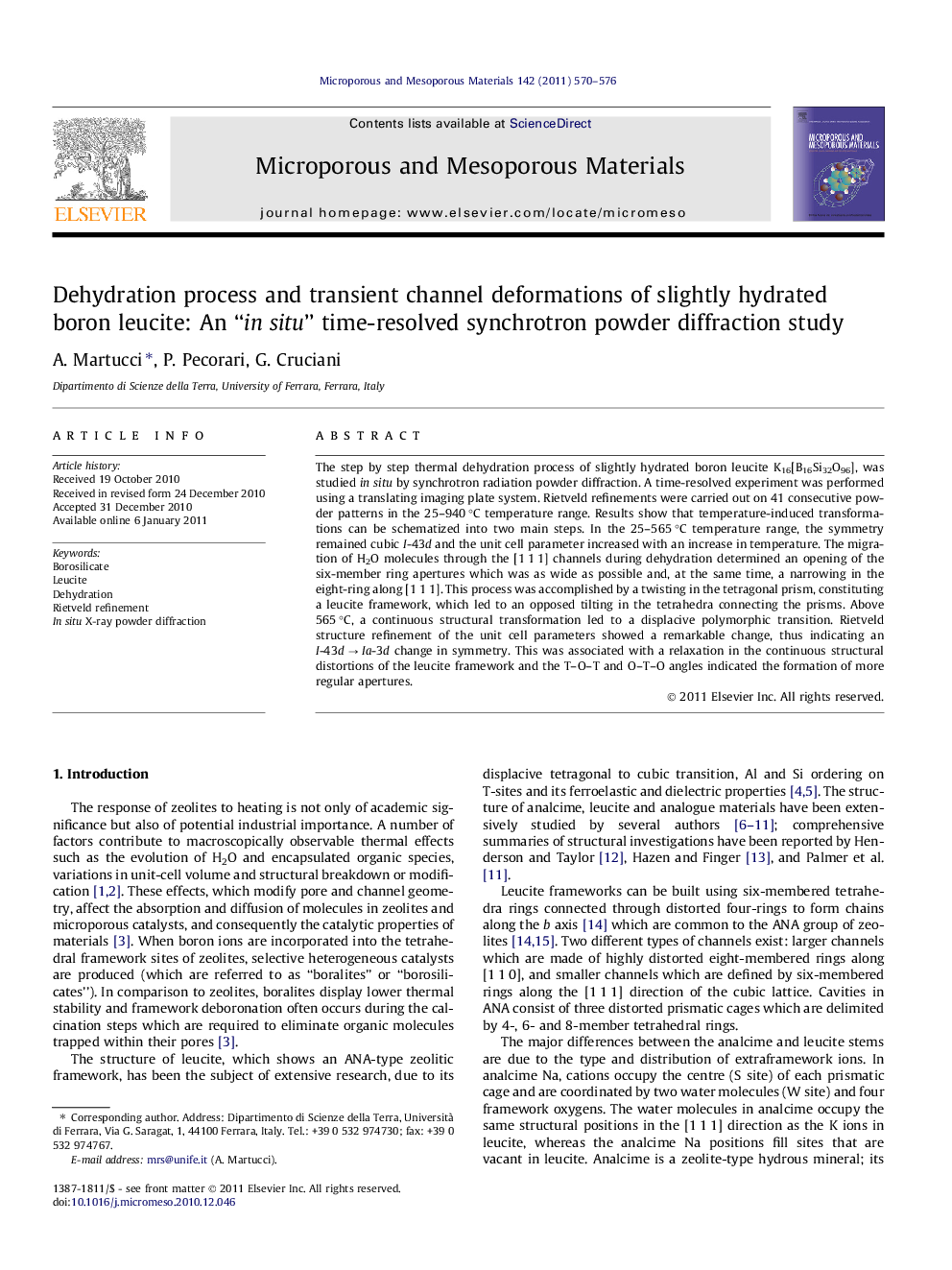| کد مقاله | کد نشریه | سال انتشار | مقاله انگلیسی | نسخه تمام متن |
|---|---|---|---|---|
| 74473 | 49092 | 2011 | 7 صفحه PDF | دانلود رایگان |

The step by step thermal dehydration process of slightly hydrated boron leucite K16[B16Si32O96], was studied in situ by synchrotron radiation powder diffraction. A time-resolved experiment was performed using a translating imaging plate system. Rietveld refinements were carried out on 41 consecutive powder patterns in the 25–940 °C temperature range. Results show that temperature-induced transformations can be schematized into two main steps. In the 25–565 °C temperature range, the symmetry remained cubic I-43d and the unit cell parameter increased with an increase in temperature. The migration of H2O molecules through the [1 1 1] channels during dehydration determined an opening of the six-member ring apertures which was as wide as possible and, at the same time, a narrowing in the eight-ring along [1 1 1]. This process was accomplished by a twisting in the tetragonal prism, constituting a leucite framework, which led to an opposed tilting in the tetrahedra connecting the prisms. Above 565 °C, a continuous structural transformation led to a displacive polymorphic transition. Rietveld structure refinement of the unit cell parameters showed a remarkable change, thus indicating an I-43d → Ia-3d change in symmetry. This was associated with a relaxation in the continuous structural distortions of the leucite framework and the T–O–T and O–T–O angles indicated the formation of more regular apertures.
Figure optionsDownload as PowerPoint slideResearch highlights
► Insitu dehydration of K16[B16Si32O96] was studied between 25 and 940 °C.
► In the 25–565 °C temperature range, the symmetry remained cubic I-43d.
► Above 565 °C, structural deformations led to an I-43d → Ia-3d change in symmetry.
► After dehydration, T–O–T angles indicated a relaxation process of the framework.
Journal: Microporous and Mesoporous Materials - Volume 142, Issues 2–3, July 2011, Pages 570–576